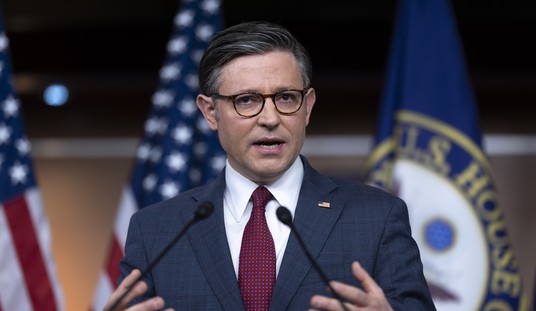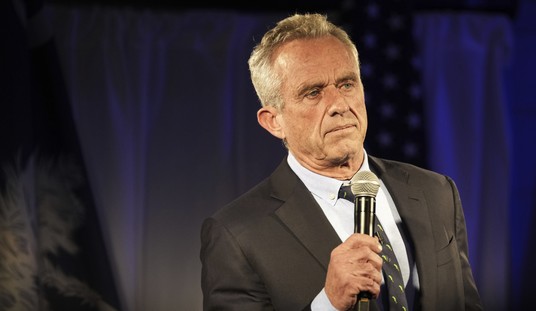“U.S. Ponders Ways to Use Force on Iran”
“Here’s How the U.S. Could Invade Iran”
“U.S. Said Set to Attack Iran”
“Does [the U.S. President] Plan to Invade Iran?”
“Saudis Deny U.S. Planned to Attack Iranian Oilfields”
“U.S. May Attack Iran Missiles: White House Mulls Ways to Protect Gulf”
“[U.S.] Navy Denies Plan to Attack Iranian Ships in Persian Gulf”
“U.S., Allies Setting Stage to Attack Iran, Says Paper”
“Chavez Warns Against U.S. Attack on Iran”
“Iran’s Top Leader Warns of U.S. Attack”
“Iran: U.S. Attack May Mean ‘Slaughterhouse’”
“Sharon on the Warpath: Is Israel Planning to Attack Iran?”
“Israel Has Plans to Attack Iran, Says London Times”
“U.S. Planning Nuclear Strike on Iran”
“The Coming War with Iran”
“Report: Israel Asks for ‘Air Corridor’ to Attack Iran”
“News from Israel: [U.S. President] Wants to Attack Iran Soon”
“Iran in U.S. Crosshairs”
Do those headlines sound familiar? Judging by the recent deluge of print, web, television, and radio reports and discussions, America and Israel have responded to a growing “drumbeat for war,” as some have put it, and are on the brink of launching an overt military attack on Iran. As the real newspaper and web headlines cited above clearly show, the U.S. and its ally in the Levant have failed to learn the proverbial dangers of a land war in Asia, and are furiously building toward another engagement with another Islamic country.
But wait. The dates on those headlines are, respectively, November 1979, December 1979, August 1980, August 1980, June 1984, June 1987, March 1988, November 1992, November 1993, December 1996, June 1997, August 2004, March 2005, April 2006, July 2006, February 2007, May 2008, and February 2009.
That’s right: the claim that America or Israel is on the cusp of attacking Iran is as old as the Islamic Republic itself. Such assertions have peppered media reports, op-eds, and other commentary for three decades and change at this point – a fact which should give folks pause about taking such claims any more seriously now than at any point in recent history.
Yes, Iran is hostile to the U.S. and its interests, and yes, it is almost certainly working as quickly as it can on the development of a nuclear weapon. However, despite growing hysteria on the part of media and analysts, and despite public debates like that being hosted by Foreign Affairs (the best piece among which is this one by Colin Kahl, former head of Middle East policy at the Pentagon), a western-initiated war with Iran is little more likely now than at any point in the last three decades, if not altogether less so.
HOW MANY LINES IN THE SAND?
This isn’t to minimize Iran’s nuclearization effort as an issue. President Obama clearly has a decision to make when it comes to dealing with Iran’s apparently inexorable march toward becoming a nuclear weapons state, as will the next president should Obama be defeated in this year’s election. Thus far, the administration has issued firm statements while consistently moving its “red line” of acceptable nuclear progress backward in response to each Iranian action. As Pepe Escobar noted at CBSNews Online:
Let’s start with red lines. Here it is, Washington’s ultimate red line, straight from the lion’s mouth. Only last week Secretary of Defense Leon Panetta said of the Iranians, ‘Are they trying to develop a nuclear weapon? No. But we know that they’re trying to develop a nuclear capability. And that’s what concerns us. And our red line to Iran is do not develop a nuclear weapon. That’s a red line for us.’
How strange, the way those red lines continue to retreat. Once upon a time, the red line for Washington was “enrichment” of uranium [Auth. note: As Olli Heinonen has recently noted, the Fordow plant is currently producing 20% enriched uranium – an important step in producing weapons-grade uranium] . Now, it’s evidently an actual nuclear weapon that can be brandished. Keep in mind that, since 2005, Iranian Supreme Leader Ayatollah Khamenei has stressed that his country is not seeking to build a nuclear weapon. The most recent National Intelligence Estimate on Iran from the U.S. Intelligence Community has similarly stressed that Iran is not, in fact, developing a nuclear weapon (as opposed to the breakout capacity to build one someday).
Why does the standard U.S. response to Iran’s advancement past each impassable line-in-the-sand ultimatum appear to be to shrug, take ten more paces backward, draw a new line, and demand that Iran not cross that one? The two-fold answer to that is as simple as it is frustrating for those who prioritize non-proliferation (particularly to state supporters of terror like Iran) very highly.
WHY AN ATTACK WON’T HAPPEN: REASON I
First, it is highly unlikely that an aerial campaign would be able to successfully eliminate Iran’s nuclear program, which is made up of deeply buried, hardened targets spread across multiple sites (though Matthew Kroenig has argued in Foreign Affairs that the majority of sites that serve as the most critical targets are within reach of conventional airborne munitions). Further, attempting to strike these sites would have a net negative effect on the U.S.’s interests; as President Bush’s Director of Central Intelligence Michael Hayden reiterated just this week,“ When we talked about this in the government, the consensus was that [attacking Iran] would guarantee that which we are trying to prevent — an Iran that will spare nothing to build a nuclear weapon and that would build it in secret.” A certain effect of striking or even eliminating the program (if that were possible) but leaving the regime intact would be to double their resolve to establish a nuclear weapons capability, in no small part because success in that pursuit would provide it the security of deterrence (and the freedom to continue its effort to be a bully in the region and beyond), as North Korea has repeatedly demonstrated.
Given these limitations and first-order effects, the next-best option would seem to be to carry out an operation that simultaneously eliminated Teheran’s nuclear sites and deposed the regime. This is akin to what FPI’s Jamie Fly and AEI’s Gary Schmitt have suggested, with one major difference: Fly and Schmitt appear to be calling for an solely aerial campaign (augmented, almost certainly, by other conventional standoff weaponry), but with a target list that is expanded beyond sites that are directly related to the nuclear program. They write:
A limited strike against nuclear facilities would not lead to regime change. But a broader operation might. It would not even need to be a ground invasion aimed specifically at toppling the government. The United States would basically need to expand its list of targets beyond the nuclear program to key command and control elements of the Republican Guard and the intelligence ministry, and facilities associated with other key government officials. The goal would be to compromise severely the government’s ability to control the Iranian population. This would require an extended campaign, but since even a limited strike would take days and Iran would strike back, it would be far better to design a military operation that has a greater chance of producing a satisfactory outcome.
With all due respect to Fly and Schmitt, it’s a very good thing that this suggestion will never come to fruition, in large part because it is one of the worst suggestions that has been put forth to date for dealing with the Iranian nuclear issue. If simply bombing those sites which can be identified and reached with conventional weapons is an ineffective way of dealing with Iran’s program, then attacking those sites and striking Teheran’s “key command and control elements” from 30,000 feet AGL or from up to 1,000 nautical miles away, then leaving the resulting chaotic mess for the Iranian people (and those still remaining in the military- governmental complex) to clean up and rebuild from is an exponentially more effective way of ensuring that whatever does emerge from the rubble will not in any way be positively disposed to the U.S. and its interests. In other words, the idea that the best possible option on Iran would be to fly in, break everything (in hopes of prompting regime collapse), and then immediately leave is, quite simply, mind-boggling.
WHY AN ATTACK WON’T HAPPEN: REASON II
This brings us to the second reason why an attack on Iran is as unlikely now as it has been at any time in recent history, if not more: the fact that the only option to truly ensure that the existing program is done away with, and to create the most favorable odds that Iran’s efforts at nuclearization would not be reconstituted in greater secrecy at the earliest possible moment, would be to mount an air-and-ground invasion that deposed the regime; disbanded the Revolutionary Guard; and manually searched for; reported, and destroyed all weapons of mass destruction and WMD production facilities that it found; and trusted that freeing the people from the tyranny of their government and the punishment it had brought, and meted out, upon them would immediately win them to America’s side and its cause.
Does that sound familiar? If not, then George Santayana would like to have a quick word with you, because I’ve just basically described the 2003 coalition invasion of Iraq, and that is precisely why no such invasion of Iran is in the offing at any time in the near future. Had America not had the experience of “breaking” Iraq, and learning the hard way just how difficult it is to put such a Humpty Dumpty together again, then a campaign against Iran might not be such a far-fetched idea. However, with Iraq planted firmly in our short-term memory (despite the withdrawal of uniformed troops this December, that effort is still far from over), and with Afghanistan still so unstable that the coalition is once again stepping up peace and power-sharing talks with the Taliban, the simple and unavoidable fact is that there will not be even a fraction of the public, expert, or official governmental support for an invasion of Iran that there was for the action taken against Afghanistan and Iraq last decade. Additionally, Iran’s geographic location virtually guarantees that militants will stream into the Persian state from every direction in massive numbers, augmenting an organic insurgency and waging a low- and medium-intensity conflict and domestic terror campaign that could well make both Afghanistan and Iraq seem relatively tame in comparison.
These facts argue very convincingly for the risk of an attack on Iran being as low as it has been for the preceding decades, despite the constant media speculation and hype about a supposedly impending attack that has been a feature of reports and analyses across that period.
WHAT ELSE CAN BE DONE?
This isn’t to say that nothing can or should be done to hinder Iran’s efforts. As General Hayden recently reinforced, the Bush administration recognized the folly of waging war on Iran (despite the decrepit Seymour Hersh’s repeated – and breathless – claims to the contrary), and moved to focus its overt efforts at counterproliferation on Iran’s economy in hopes of convincing the government to change course and fomenting civil unrest. Though the current president missed an opportunity to side with a budding revolution against Teheran in 2009, this Congress, the Obama administration, and the EU have only strengthened the sanctions on Iran, at grave economic cost to the Islamic Republic (though the effort to prevent Iranian oil from being purchased abroad is being short-circuited by China to its own end, as it is reportedly using the distress sanctions have caused in Iran’s oil market to negotiate a lower price for themselves on Iranian crude).
Sanctions, too, have potential downside. They can cause a targeted people to become more galvanized or a targeted regime to further tighten its grip on its subject population (just to name two), and to date they certainly haven’t convinced Teheran to give up its nuclear ambitions. However, between sanctions and a military attack that simply cannot have any guarantee of mission success or positive outcome, but which is almost certain to carry with it massively negative effects (of the first order, as well as second-, third-, and beyond) , the former has to be the preferred option, at least for the time being. Those sanctions will continue to be augmented by covert operations wherever and whenever possible, but there is almost zero chance that overt military action will also be added to the mix – again, despite the almost constant media claims to the contrary.
Where we go from here is a very big, very important question. As Kenneth Pollack put it, “if the Obama administration’s forward progress is clear enough when it comes to its Iran policy, its ultimate destination is not.” The best outcome, as Hayden and the Bush administration recognized last decade, is regime change within Iran. “It’s not so much that we don’t want Iran to have a nuclear capacity,” Hayden said, as it is “that we don’t want this Iran to have it … Slow it down long enough and maybe the character [of the Iranian government] changes.” While sanctions and covert actions have managed to slow Iran’s nuclear progress, short of war only a positive regime change (which is no guarantee) are likely make a real difference in the status quo.
Given the wide-ranging support for the coalition invasion of Iraq leading up to the 2003 start of that war, it is telling that the current debate over Iran includes hawkish voices as well as calls for the U.S. to accept the inevitability of a nuclear Islamic Republic, and to prepare its containment strategy accordingly. Because of the uncertainty of military success (and the extremely high likelihood that the cost of overt military action would be very steep), and because of the length and general messiness (for lack of a better term) of America’s recent experience with military-led regime change and counter-WMD efforts in Iraq, striking Iran simply will not be considered an acceptable option by policymakers or the general public. Sanctions and other non-military efforts will continue, but the likelihood that Iran will become a nuclear weapons state in the not-too-distant future should dictate that the current administration, and the next if the current president only serves one term, develops the most comprehensive possible plan for containment, deterrence, and fomenting positive regime change at the earliest possible opportunity.
While that is a grave future concern, though, the massive guaranteed cost of attacking Iran not only means that such action is not the “least-worst option” that we have for dealing with Teheran’s nuclear ambitions, but it also means that it remains highly unlikely that such action will be taken – again, media hype notwithstanding.














Join the conversation as a VIP Member